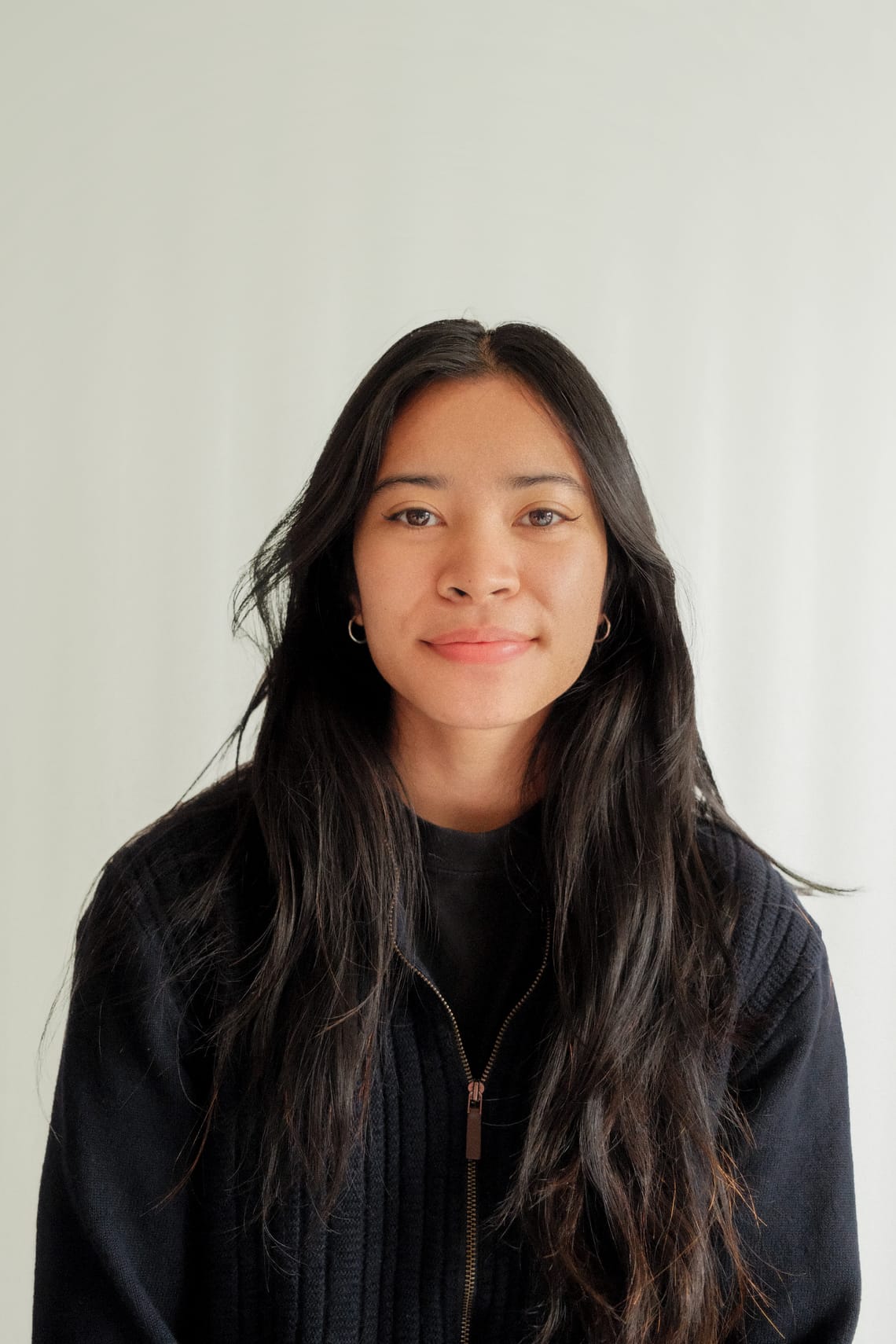
#011 - Paula Ner Dormiendo
Welcome to our interview series, where we interview emerging creatives all over the globe!
Today, we will be interviewing Paula Ner Dormiendo, a talented filmmaker whose work explores themes of community, belonging, and emotional reflection. She has conducted work for Live Nation, Wealthsimple, Gatorade x Maple Leafs, BMO x TFC, and much more. Drawing inspiration from her painting background and Filipino heritage, Paula brings a heartfelt and thoughtful approach to her storytelling.
Let's dive into the questions we have prepared for Paula!
Hi, Paula! We appreciate your interest in taking part in the FTWS interview series. How are you feeling today?
I’m doing well! Thank you so much for considering me for For Those Who Struggle.
Great to hear and no problem! Let’s start with our first question: Can you describe the steps you take to create a film? Do you begin with a visual, a narrative idea, or a particular scene?
I’ve been working in the commercial world recently, and usually with those projects, a creative brief or outline is provided for me to build around. So the foundations of those projects are pretty set in stone, but what sights and sounds are prompted by those outlines is what I build ideas from and begin to list whatever comes to mind - and my process for making a film isn’t much different.
I try to begin by investigating the heart of any story I’m trying to tell, and typically enduring in my work are themes surrounding community and belonging. They’re the themes I find I search for in my own life, and naturally arise in my work. Before anything else, I try to do a lot of emotional and personal reflection before I delve into the technical facets of the project. I find that if I don’t, the final work, regardless of how many flashy embellishments you try to band-aid it with, will always lack heart. Sometimes this process involves journaling or drawing mind maps or both.
I love making mind maps, especially through analogue methods when I brainstorm. From an early age, it’s been my go-to for starting any project. You can scour my notebooks all the way from the 9th grade, and you’ll see the evidence there, pages filled with chicken scratch mind maps haha. I usually defer any kind of judgment when I do this process and aim for quantity over quality. From there, once I feel I have enough ideas, I connect what works, and with enough dots connected, over time, you begin to see the film emerge in front of you.
Numerous filmmakers develop a distinctive style. What would you say about yours, and what was the process of developing it like?
One of my favourite philosophies about the question of style and developing your own is from the book, Making Movies by Sidney Lumet, who believed that style was about constraint.
A directing style, or any style for that matter, isn’t something that’s born from the intention of making one but rather emerges when you’re truly concise and consider what’s essential to the story. It’s a process I definitely haven’t perfected, and far from it, but I do try to seek it out in my work. Usually, I find that when I diverge from that central philosophy, it’s because I’ve resorted to a self-serving process, and I ask what the story can bring to me and not what I can bring to the story. And again, that takes a lot of inner work to truly say I can.
The landscape of cinema is always changing. How do you preserve your artistic integrity while staying on top of trends?
It depends on what you mean by “trends.” I will say it’s especially hard not to be influenced by social media, for example, where ideas so often feel homogenous and recycled ideas are rewarded, but story and authenticity come second. Though there’s no right or wrong way to grow as an artist, I no longer use social media or image-sharing sites for research for those reasons. Typically, the “trends” in film that have influenced my filmmaking boil down to the content of the story. If you consider the rise of films in the last decade about Asian-North American / immigrant stories a trend, then I suppose those are ones that have really struck a chord with me and have inspired me to bring my own intimate experiences into my work. But it’s a perspective that until recently could rarely be found in mainstream cinema, and, if anything, goes to show that when you go against trends and put your heart out there, then the right/your people will eventually find you.
What has been the most difficult obstacle you have faced in your filmmaking career thus far, and how did you overcome it?
There was a period in which I felt really disillusioned by the systems by which we make film and art. Living in a capitalist society, it’s inevitable that you’re faced with situations where people are put second to money. I had to take a long look at how I wanted to disrupt this in my own process and leadership, and make empathy and community central to how I create. It’s a task that’s ongoing and a journey that’s filled with mistakes and learning and growth and reflecting and pause, and compromise, but never at the expense of others.
Does your directorial style draw inspiration from artists or art forms beyond cinema, and have you collaborated with artists from diverse backgrounds?
All the time! I think it’s inevitable and healthy that my filmmaking draws from other mediums. Art begets art, no matter what form it takes. My love for film wouldn’t exist without my love for art, for example. Before directing, as a kid, I was an avid painter. I painted and drew everyday, and for a really long time, believed I’d pursue a career in fine arts, and (not but) then I fell in love with film. I find my love for art still persists in my influences, whether it’s through color or composition, or themes, it’s always present. But it wasn’t always like that. I used to think that I had to put aside my love of painting in order to pursue film. Eventually, I realized what a ridiculous and unnatural notion that was - especially when some of my own heroes were multi-hyphenated artists themselves, where their creativity manifested in more than one medium or format, and they didn’t restrict themselves to titles. Beyond directing, I love painting, photography and writing (though they may not always love me), so when I feel stuck creatively, I always try to scour other art forms for ideas and inspiration.
The demands of the film industry can be high. How do you strike a good balance between your personal well-being, creativity and the pressures of production?
Like anything in life, the film and art industry has its seasons. There’s time for reaping and there’s time for sowing. Once I realized that and tried to live by that philosophy, you’re reminded that everything about work and life is impermanent. And when things are impermanent, then there’s always room for change and evolution, as well as the inevitable good and bad that come with it. If you’re open to that, then nothing ever feels like a high or a low, and it forces me to just accept and appreciate the journey and look for what lessons I’m able to learn from them and what good I’m able to do with the time I have. I found that when I did, not only did I enjoy my art process more but intrinsically I began to search for people who also had similar values. Having that community has been so seminal to the way I work and lead, especially working in an industry notorious for the exploitation of others. It bears more weight and responsibility to ourselves and the people around us that we don’t succumb to a culture that demands us to compromise our or others’ well-being. So long as I remember that, I’ve since tried to filter my decisions through that lens, regulate my reactions to situations and allow empathy above anything else to take precedence in the ways I create and lead.
That concludes our interview with you. Thank you so much for participating! Would you like to share any new music or plans over the next few months?
Currently, I’m one of 9 artists as part of the Brampton Arts Organization (BAO) Artist Residency in downtown Brampton, which I’m so excited about and grateful for! For the next 4 months, I’ll have access to a studio to research and develop a new body of work for the hopes of an exhibition. The project is called, “What Makes a House a Home?” which at its centre, uses a collection of photos I took in 2022 when my family had the opportunity to revisit our native country, Philippines, after 14-15 years since we moved to Canada. The project is an extension of a piece I recently did with Vibe Arts Toronto, where two of those photos were selected as part of their Desire Lines Program in partnership with RBC and Pattison Sign Group. It’s currently on display in Bathurst Station which is so surreal! Beyond this, I hope to just continue to revisit and create more personal work this year.
Follow Paula Ner Dormiendo:
Get Featured: https://forms.gle/iMEu3NouFWTWKwo78
Donate: https://paypal.me/NaolDenko
